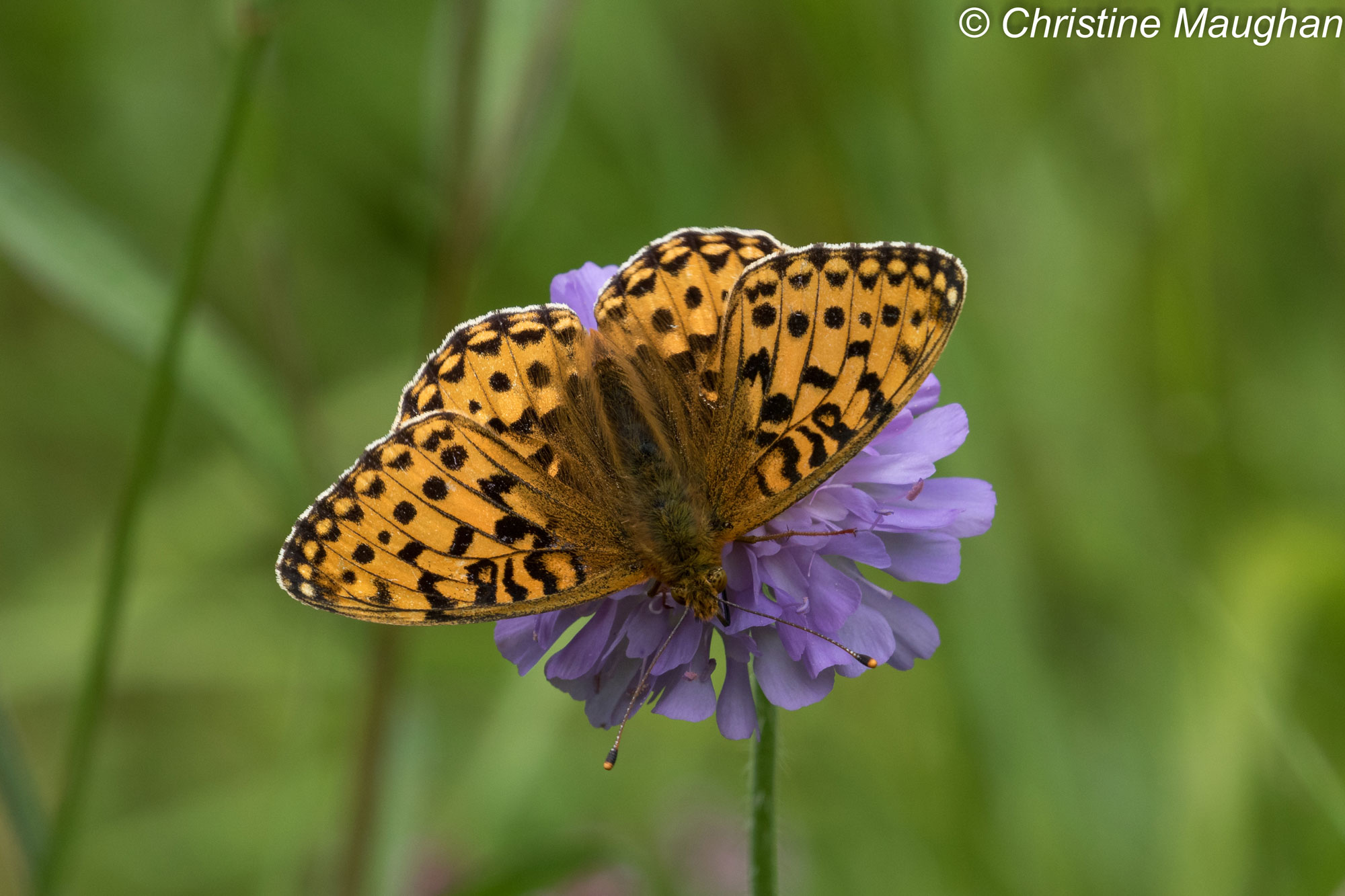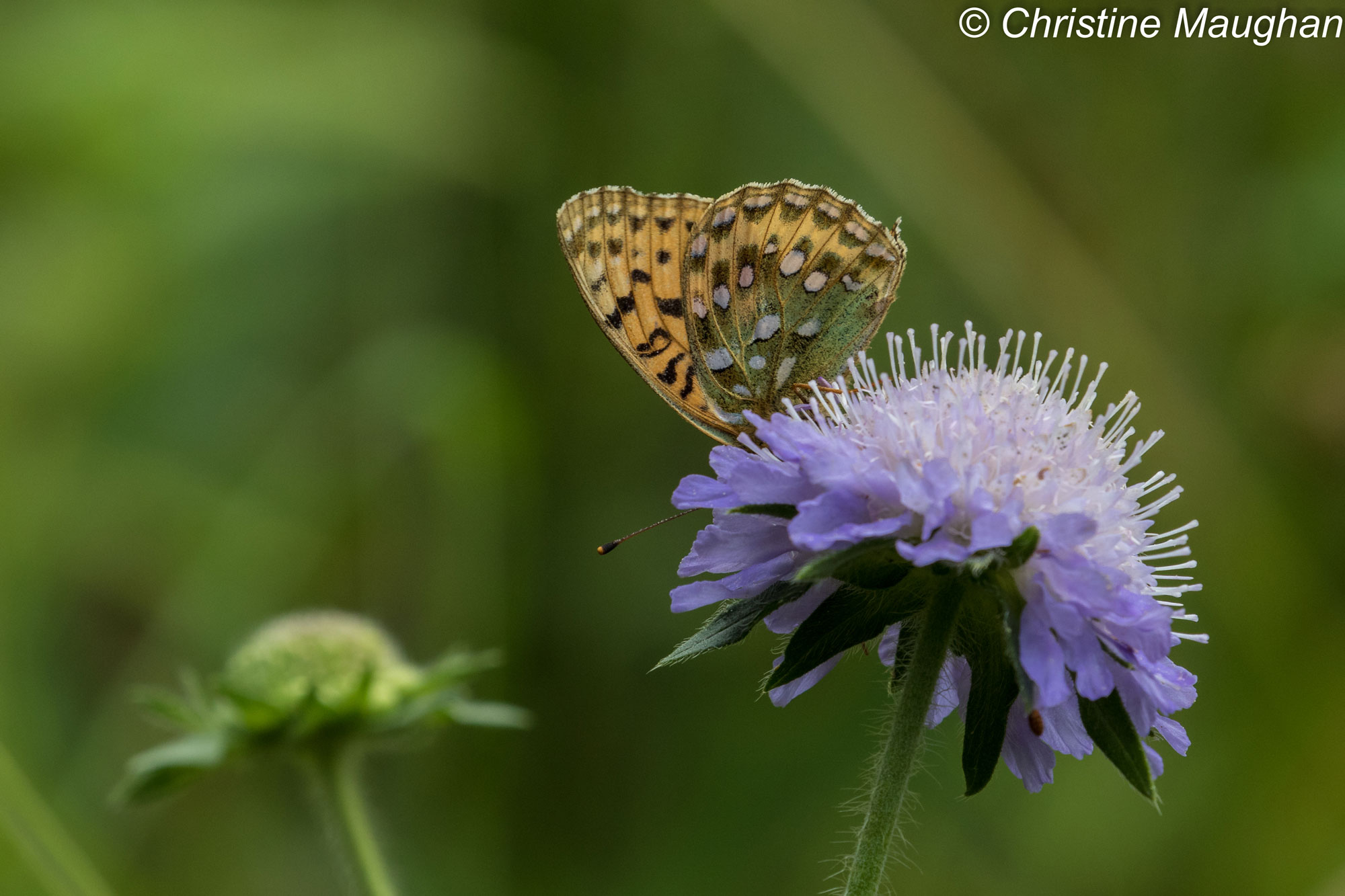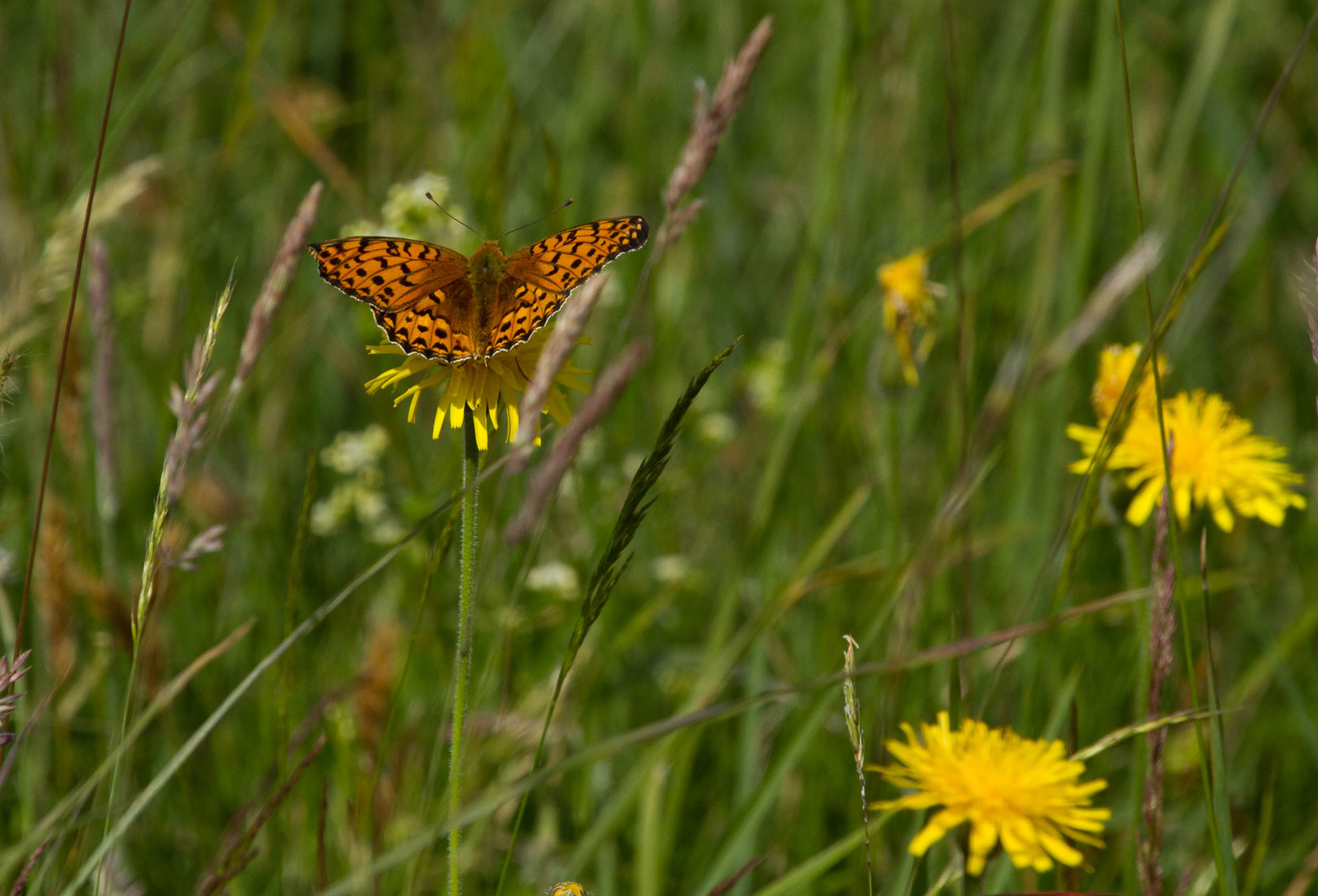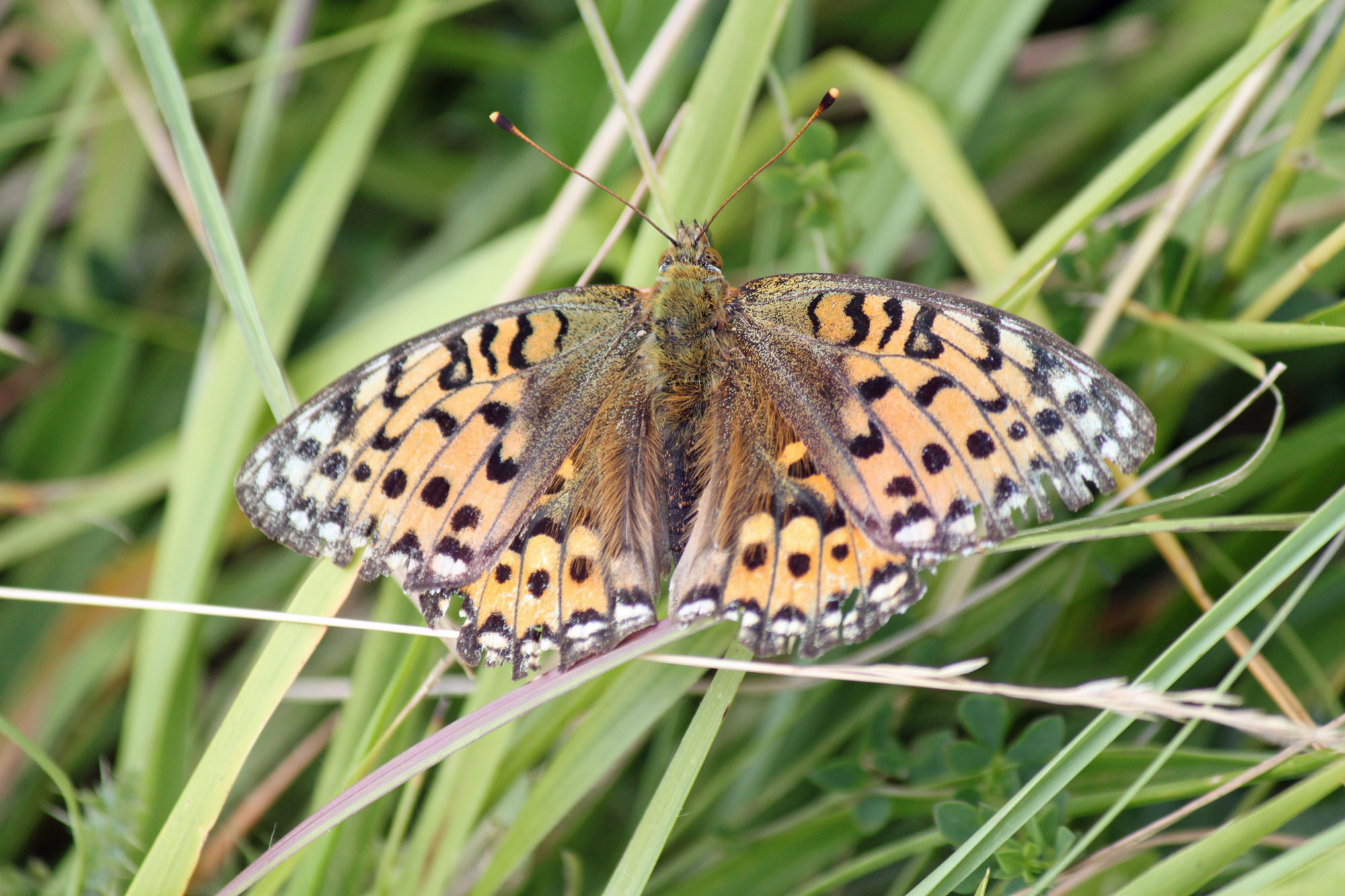
Dark-green Fritillary Argynnis aglaja
Habitat
The Dark Green Fritillary is the most widespread of the large fritillaries and is found on downland, dunes, coastal cliffs and moorland. It often flies in damp places. In the East Midlands region it is found predominantly in the Peak District
Identification
The Dark Green Fritillary is a large fritillary with golden orange ground colour and black markings on its wings. One of the distinguishing identification features is the green wash on the underwings which gives it its name.
Flight times
There is a single generation flying between early June and early September.
Food plants
Eggs are laid singly close to lush growth of violets.
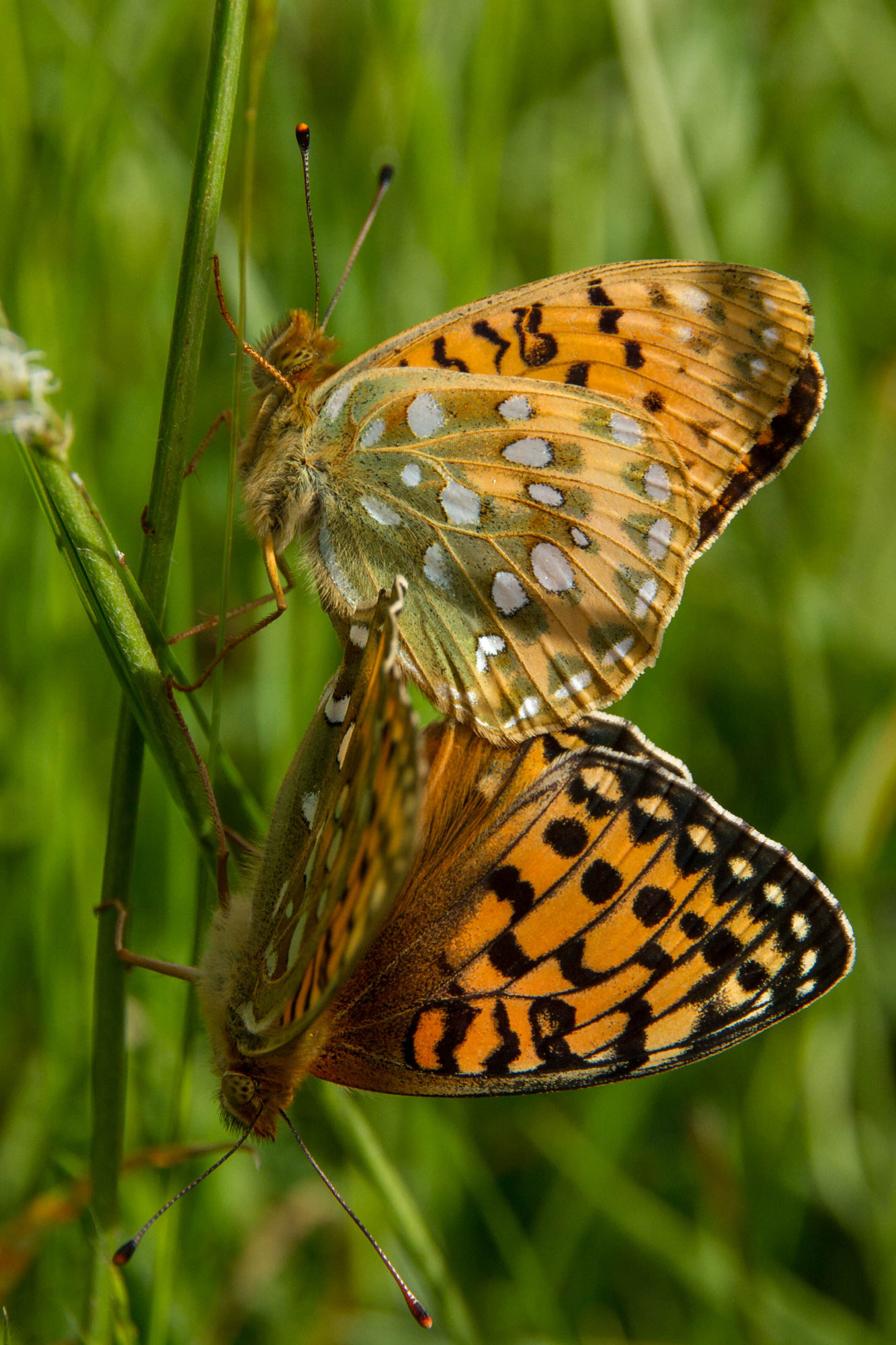
Distribution Maps
2005-2009
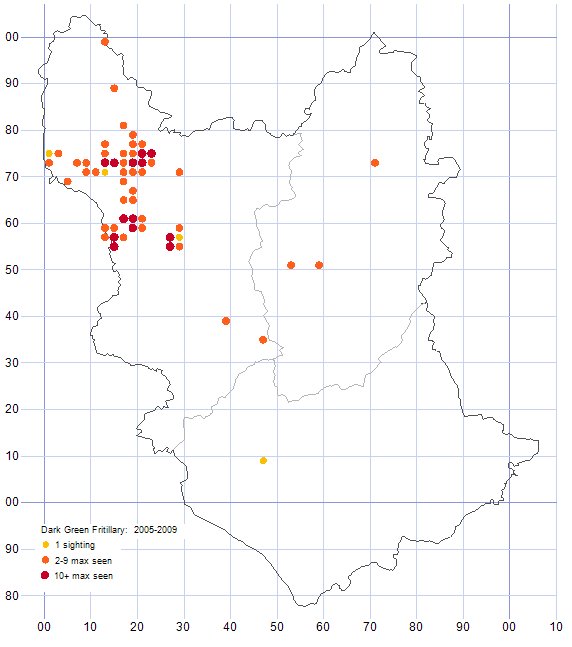
2010-14

2015-19
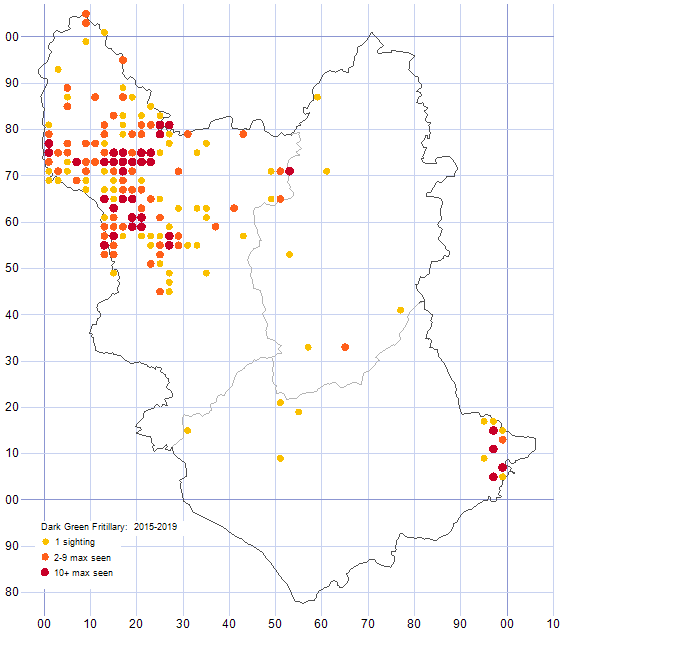
2005-2019
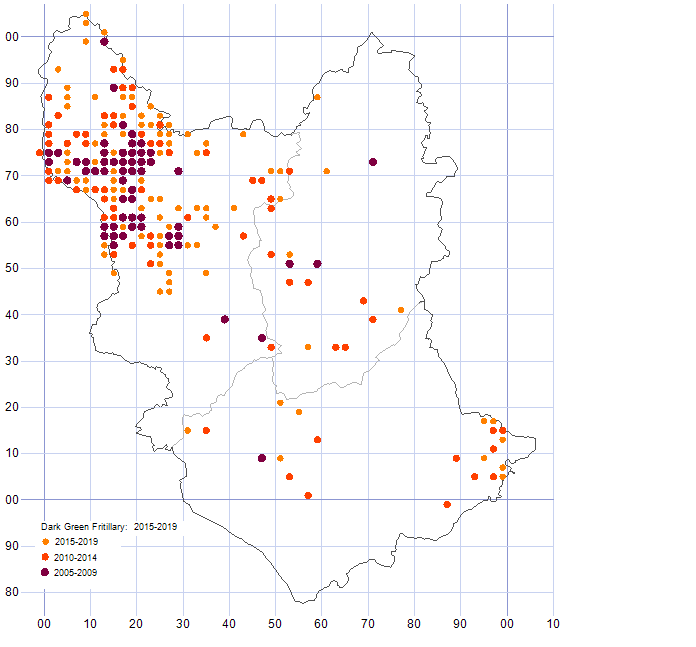
During this fifteen-year period distribution in Derbyshire has spread out from the original nucleus in the Peak District, and there have also been more records from Nottinghamshire & Leicestershire.
2020-24
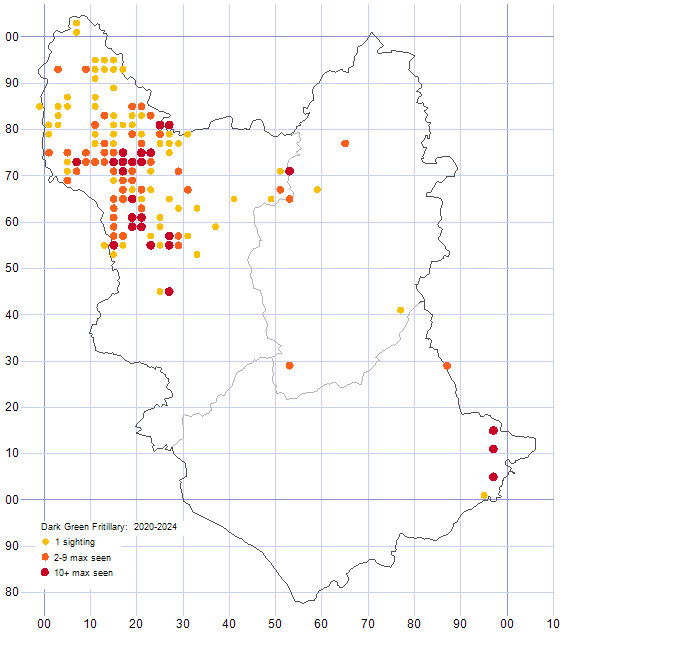
2010-24
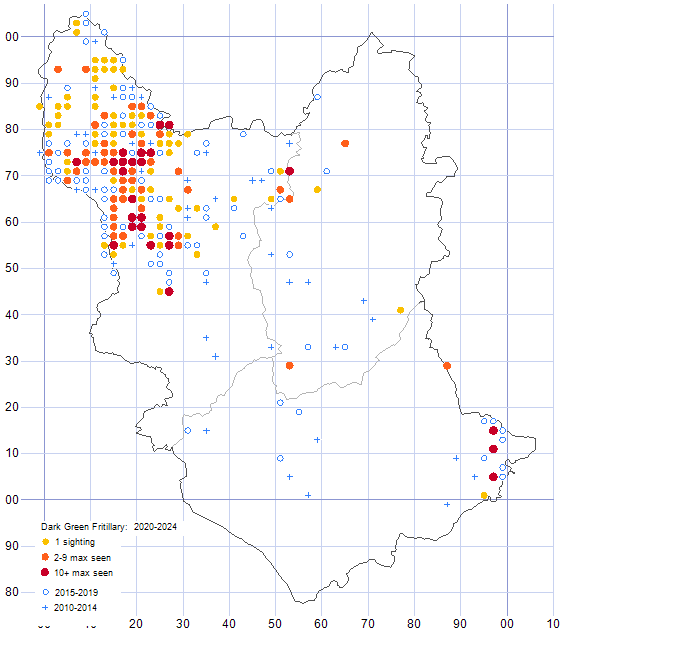
Changes in distribution between 2010-2014, 2015-2019 and 2020-24
Although maintaining its stronghold in the Peak District, there have been far fewer records in the last five years from Nottinghamshire and Leicestershire, with only Rutland maintaining a significant population.
2015
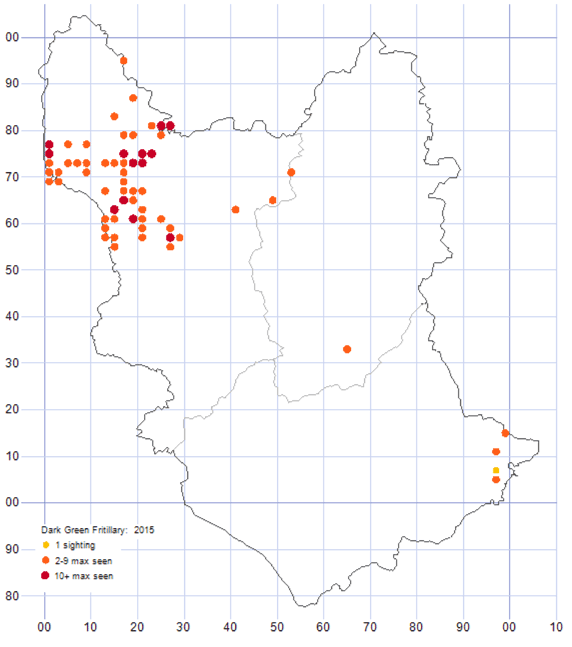
| No of tetrads | 63 |
|---|---|
| First sighting | 02/06/2015 |
| Last sighting | 11/09/2015 |
2016
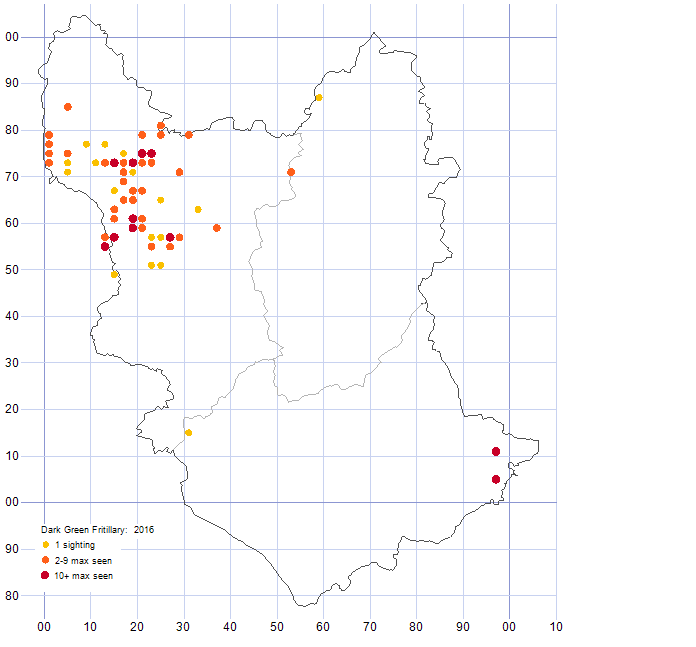
| No of tetrads | 59 |
|---|---|
| First sighting | 06/06/2016 |
| Last sighting | 12/09/2016 |
2017
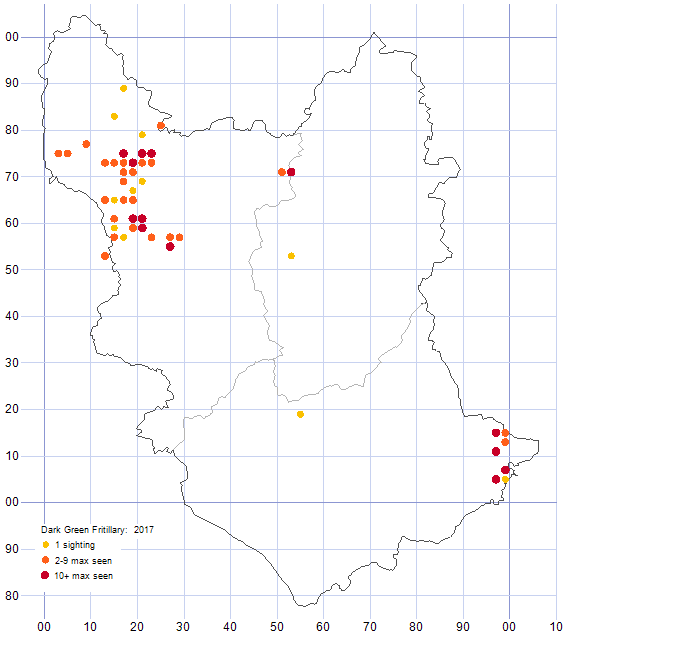
| No of tetrads | 49 |
|---|---|
| First sighting | 31/05/2017 |
| Last sighting | 28/08/2017 |
2018
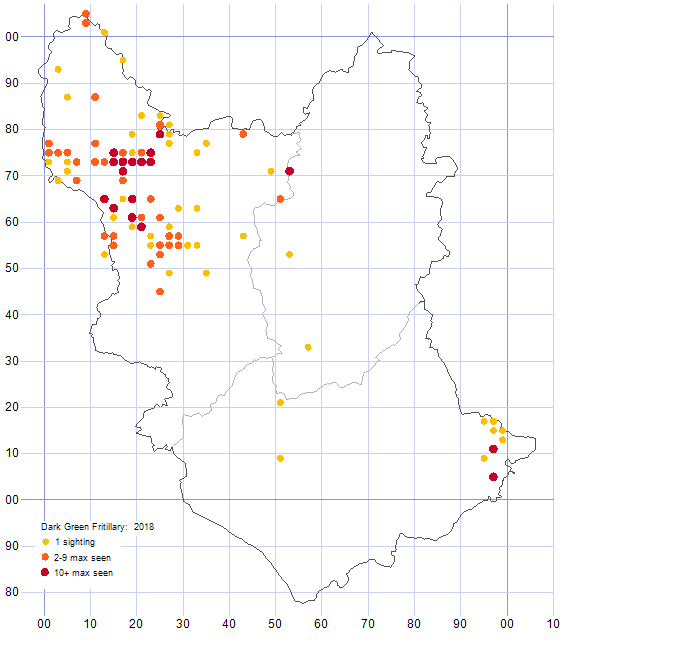
| No of tetrads | 91 |
|---|---|
| First sighting | 17/05/2018 |
| Last sighting | 15/08/2018 |
2019
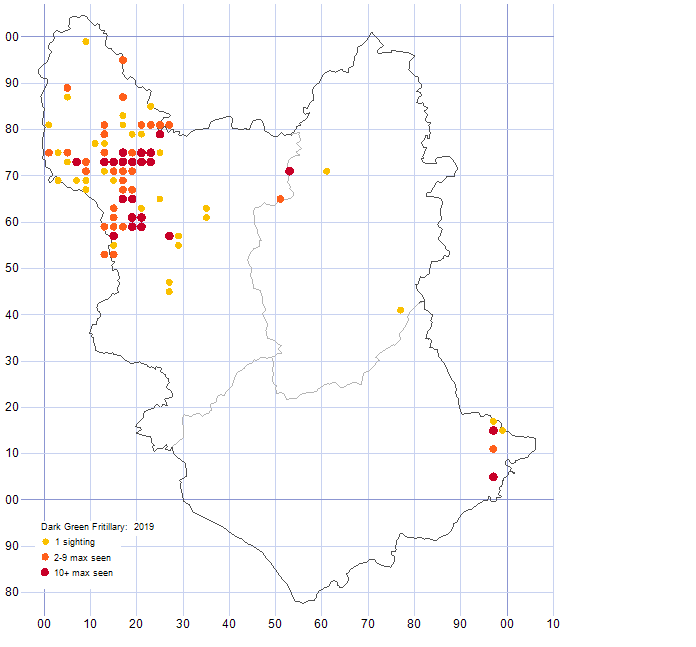
| No of tetrads | 84 |
|---|---|
| First sighting | 23/05/2019 |
| Last sighting | 30/08/2019 |
2020
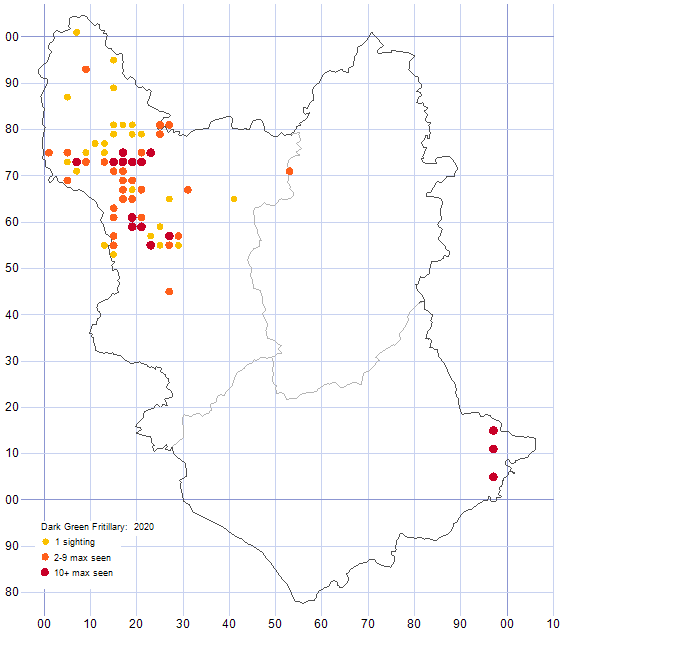
| No of tetrads | 68 |
|---|---|
| First sighting | 07/05/2020 |
| Last sighting | 24/08/2020 |
2021
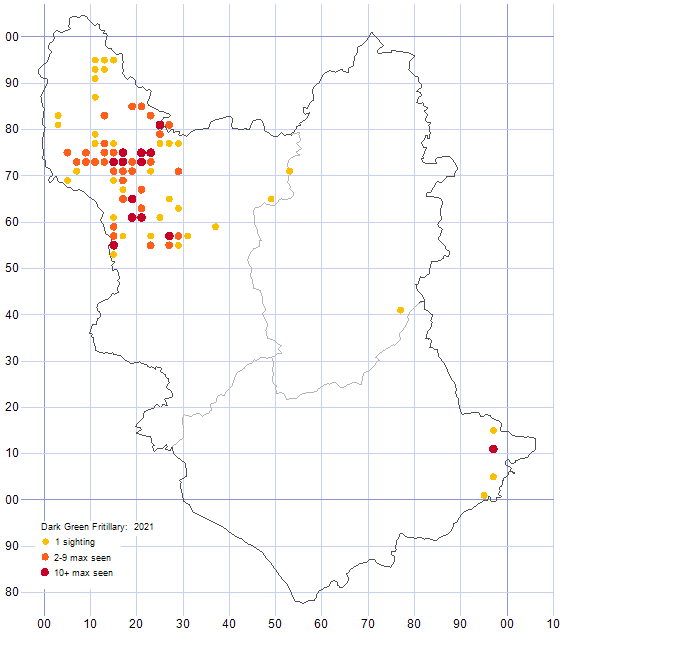
| No of tetrads | 79 |
|---|---|
| First sighting | 08/06/2021 |
| Last sighting | 16/09/2021 |
2022
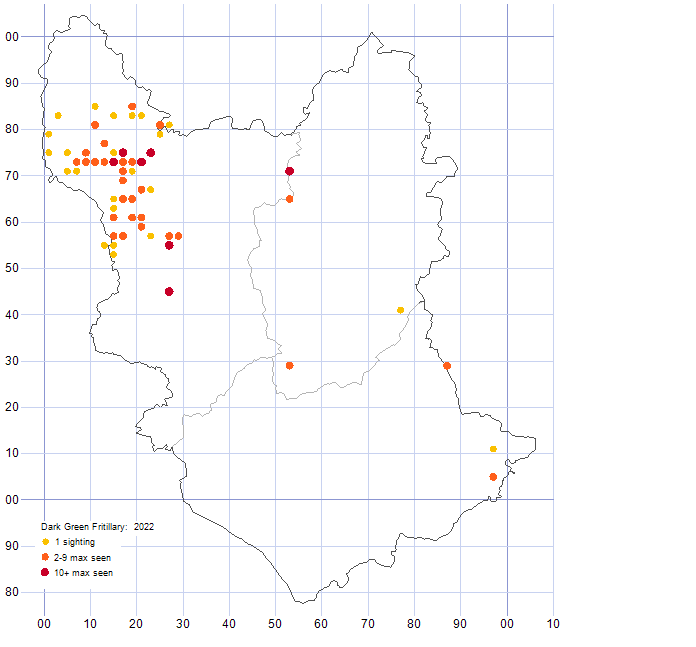
| No of tetrads | 58 |
|---|---|
| First sighting | 14/05/2022 |
| Last sighting | 01/09/2022 |
2023
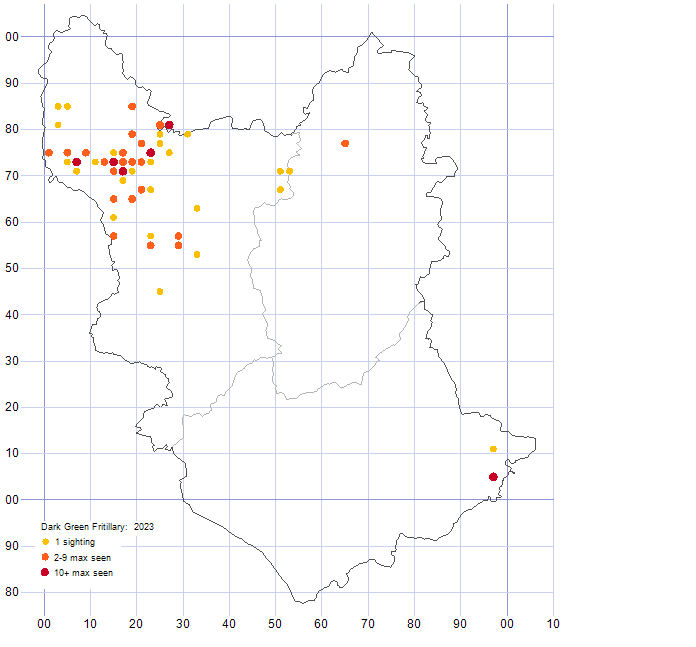
| No of tetrads | 51 |
|---|---|
| First sighting | 06/05/2023 |
| Last sighting | 13/09/2023 |
2024
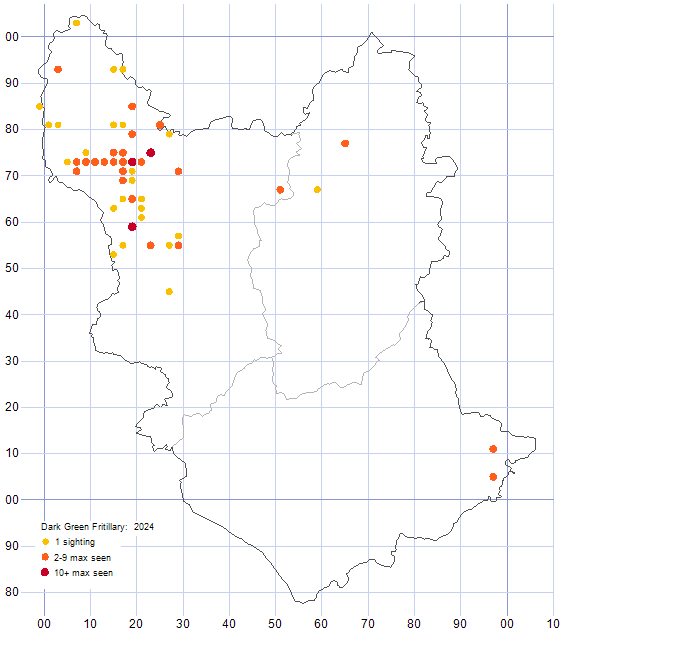
| No of tetrads | 51 |
|---|---|
| First sighting | 18/6/2024 |
| Last sighting | 14/09/2024 |
